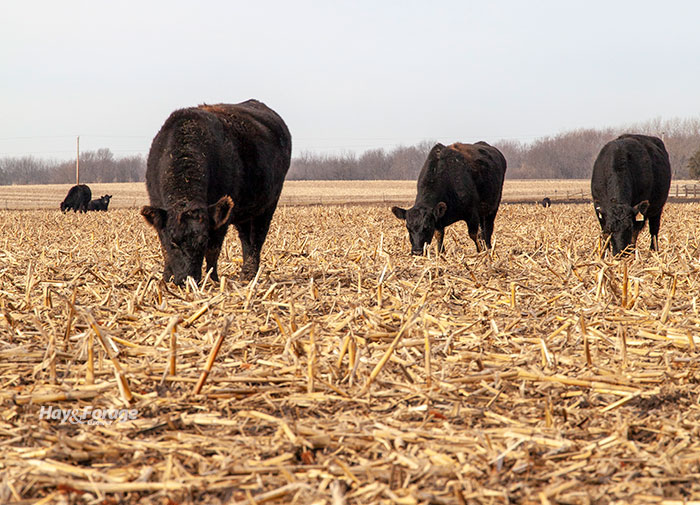
Many parts of the country have endured dry weather conditions this year, and the lack of rainfall could affect more than just grain yields. Drought-stressed cornstalks can carry high levels of nitrates, and grazing livestock on these fields can put their health at risk.
Aaron Berger, beef educator, and Mary Drewnoski, beef systems specialist, with University of Nebraska-Lincoln Extension say corn residue is typically a great resource for fall and winter grazing. Corn grain, leaves, and husks contain lower levels of nitrates than cornstalks, and cattle tend to selectively graze these components first. However, several states are producing below-average yields, and animals have less to forage for.
“Because drought-stressed corn is smaller and stunted, it is more likely that cattle will eat lower into the stalk where nitrate levels may be high,” the authors predict. “Nitrates are usually more concentrated in the bottom third of the stalk in the corn plant.”
While dryland areas are of concern, issues can also arise on irrigated acres. Corn is likely to be stunted in parts of a pivot-irrigated field where water didn’t reach. In this case, Berger and Drewnoski suggest fencing out corners and edges where crops are stressed to discourage cattle from consuming them.
Leave the stalks
Corn might not only be short in stature, but it is also short in supply. Due to a lack of feed this year, producers are expected to extend the fall and winter grazing period to utilize all corn residue in the field. This might lead to cattle eating more of the most dangerous parts of the plant.
“Resist the temptation to leave cattle on cornstalks after they have eaten most of the leaves and husks,” Berger and Drewnoski assert. “Avoid forcing the cattle to consume more of the potentially high-nitrate stalks.”
Another way to combat the negative consequences of nitrates is to feed cattle before they begin grazing drought-stressed cornfields. Berger and Drewnoski recommend feeding 2 pounds of corn per head per day to reduce the amount of forage animals consume and lessen the effect nitrates will have on them.
“Feeding additional supplemental energy on areas where nitrates could be at higher levels can help reduce the risk of nitrate poisoning by giving the rumen microbes the energy they need to increase the rate of detoxification,” the authors explain.

Amber Friedrichsen served as the 2021 Hay & Forage Grower editorial intern. She currently attends Iowa State University where she is majoring in agriculture and life sciences education-communications and agronomy. Friedrichsen grew up on her family’s diversified crop and livestock farm near Clinton, Iowa.

